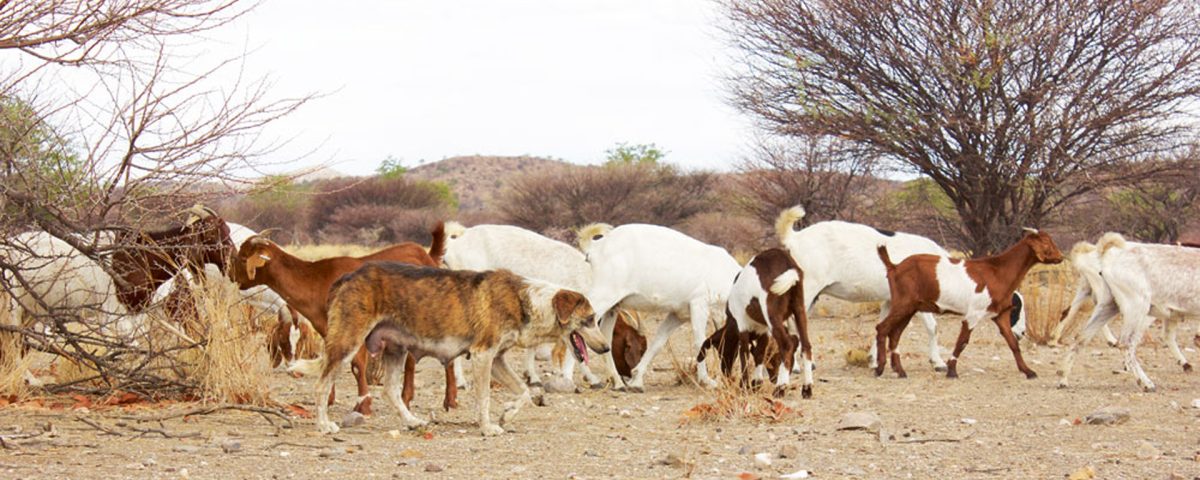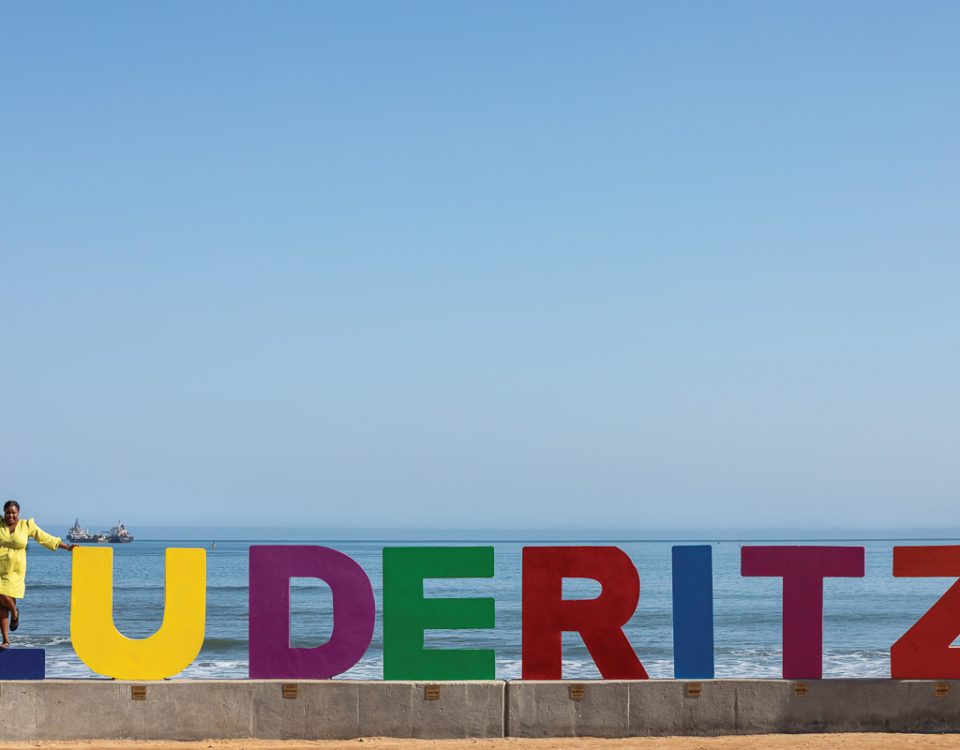
Facts on the environment in Namibia #3
March 16, 2017
Nature first at Ongava Tented Camp
March 22, 2017Text and photographs Gail C Potgieter
The people in the southern Kunene Region live in a starkly beautiful part of Namibia. To the visitor, it appears to be an undisturbed wilderness where rocky, red moonscapes meet endless blue skies. It is the home of famously desert-adapted plants and animals, where life continues despite the lack of rain and scorching sun. It is easy to forget that there are people here too. Like the wildlife with which they share the land, the people must be tough and resourceful to survive in this harsh environment.
Since 1996, the Namibian Government and non-governmental organisations have assisted rural Namibians to establish communal-area conservancies. These local institutions have allowed people to benefit from tourism and the sustainable use of wildlife in exchange for their commitment to wildlife conservation. However, conservation comes at a cost to these livestock farming communities. The farmers report that black-backed jackals and cheetahs are increasing in the region, and that livestock are often lost to these predators. These losses usually occur during the day, as livestock go out to graze.
Is there a solution to these problems that is practical, affordable and effective? The Namibia Nature Foundation (NNF) and the World Wildlife Fund (WWF in Namibia) started a project funded by the Millennium Challenge Account (MCA-Namibia) to find out whether such a solution exists. Farmers are practical people who employ only farming methods that suit their pockets and have the desired effect. The aim was, therefore, to improve local livestock protection methods to assist farmers coexisting with predators.
When you drive through the southern Kunene Region, take the time to observe the herds of goats and sheep you encounter – you are likely to see dogs with the flocks. These dogs are generally small to medium in size, of mixed genetic heritage, and are frequently found lying near their flocks. They are nonetheless highly alert and will break out into a cacophony of barking if you try to approach. Good dogs will react in a similar manner to predators that threaten their livestock. These dogs are formally known as livestock guarding dogs.
Dogs have been used to guard livestock for nearly as long as they have been domesticated. The ancient practice of raising guarding dogs is exceptionally simple. Dogs that interact closely with livestock from a young age will start to identify with the goats and sheep as their family. As they grow older, their instincts will tell them to defend their adopted family. The Damara people in southern Kunene have been raising and training livestock guarding dogs for generations.
Using livestock guarding dogs is therefore a kind of locally applicable solution to human-predator conflict. Yet some aspects of the way dogs are used in the region need to be improved substantially before heralding success. These hard-working dogs are often undervalued and may are malnourished and suffering from preventable diseases. The mating process is not controlled, so good working-dog genes are often mixed with the genes of non-working dogs. Even puppies from good working lines are given away, as dogs are not considered valuable enough to be sold. Many of the above issues are rooted in cultural norms and practices that are not easily altered. In the Sorris Sorris Conservancy I found someone who bucks this trend – she not only knows how to raise good guarding dogs, but also genuinely cares for them. Her name is Ouma Erna !Nabases.
Ouma (Grannie) Erna is an elderly widow who lives with her son George. They have a flock of goats that George faithfully herds every day, accompanied by livestock guarding dogs. Three of these dogs are medium-sized, stocky dogs that work together as a family – a mother and two of her sons. The dogs are all fit and healthy – as working dogs should be. When I arrived at her house about lunchtime, Ouma Erna was sitting with the dogs waiting around her for their share of lunch.


To find out more about how her dogs worked, I asked if I could accompany George and the working dogs into the field. When George had finished his lunch, we went out with the goats. All of the dogs automatically arose from their resting places and mingled easily with the goats as we headed out.
George has herded these goats for his mother ever since they came to the area 12 years ago. He watched all of the dogs grow up and has witnessed their behaviour towards predators first-hand. He told me that jackals approaching the herd too closely are chased and occasionally caught by the dogs. Cheetahs tend to stay away from the dogs altogether. There have been no losses to cheetahs when the dogs were present. As George recounted to e how the dogs were raised and trained, I realised that he could have written the guidelines fro training livestock guarding dogs!
Back at the homestead, I chatted with Ouma Erna about various aspects of breeding guarding dogs. She has encountered problems with controlling the dogs’ mating and noted that the people in the area want to get puppies for free. She also reported that several puppies of the recent litter had been bitten by a snake and died. These are only a few of the challenges she faces. I promised to help her address these as we work together to establish a structured dog-breeding programme for the Sorris Sorris Conservancy.
The process of breeding dogs and concurrently educating the local people is a worthy challenge. While using livestock guarding dogs is not a new concept to the people of southern Kunene, caring for them is. Ouma Erna is a role model for others – she shows that a little extra effort and care can produce healthy guarding dogs that effectively protect the livestock.
Gail Potgieter has an MSc in Zoology and is a specialist in human-predator conflict. She works with Namibian farmers to reduce their livestock losses to predators. With funding from the US Millennium Challenge Account she is working on a guard-dog breeding programme in the southern Kunene Region.
| This article was first published in the Flamingo March 2013 issue.


